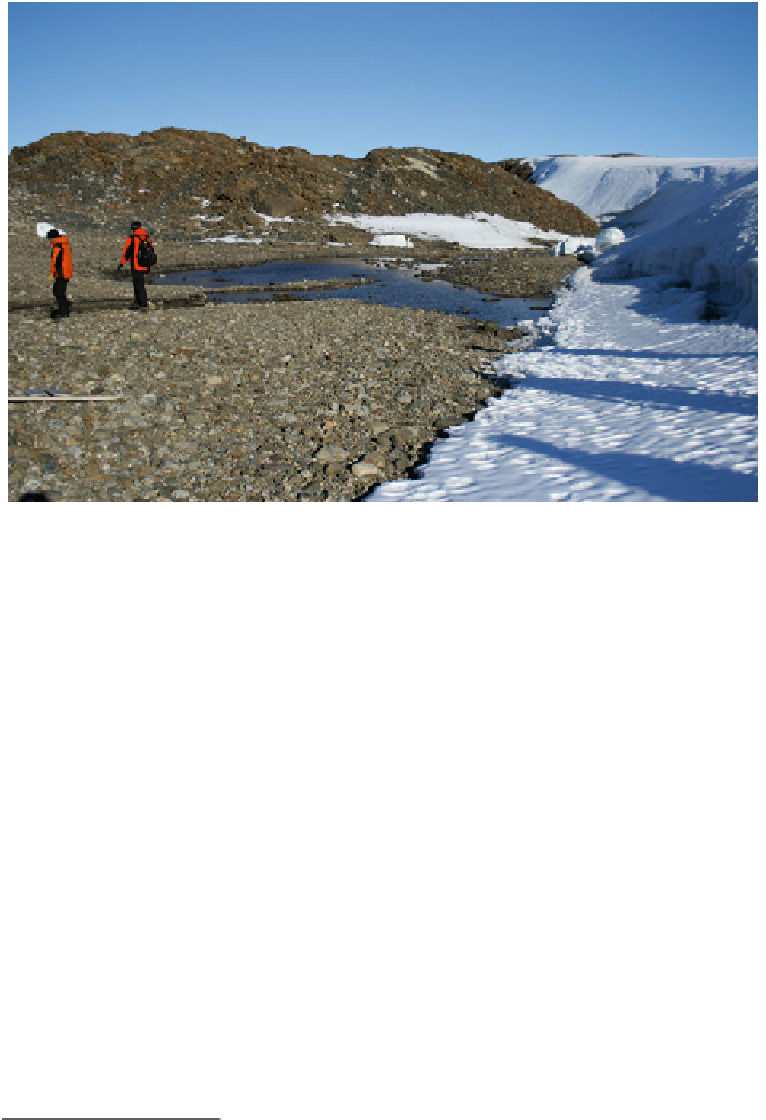Geoscience Reference
In-Depth Information
Fig. 6.2
An epiglacial lake at the Russian Novolazarevskaya Station, eastern Dronning Maud Land
balance is positive and negative, respectively. In ice massif equilibrium, ice
fl
flows from the
accumulation zone to the ablation zone to balance the budget.
Ice sheets and glaciers are very cold environments but even there three kinds of lakes
are found (e.g., Hodgson 2012). Glacial meltwater forms seasonal or perennial lakes,
which are called proglacial lakes.
1
Their common characteristic is that the water balance
is dominated by glacial meltwater available in the ablation regions, and therefore they are
located mainly close to the warm boundary of land ice massifs. But also within the
accumulation zones there are two kind of isolated ablation regions. Nunataks are warm
spots within the ice sheets and their surface is largely bare ground, which absorbs solar
heat well (Lepp
ranta et al. 2013a). The surface of nunataks is kept bare by sublimation,
snowdrift, and melting of snow and ice. The lakes, which form of the glacial runoff water
at the edge of the ice massifs and in nunataks are epiglacial lakes (Fig.
6.2
).
In places, on ice massifs, sublimation and net snowdrift exceed snow accumulation by
precipitation, and therefore the surface is bare ice, as a distinction to the snow surface in
the accumulation zone. Because of their visual appearance, these ablation regions are
called blue ice. Due to the low albedo, blue ice absorbs much solar heat resulting in
melting in the surface layer and, consequently, formation of supraglacial lakes (Fig.
6.3
).
The most exotic class of proglacial lakes is subglacial lakes. Such lake forms at the base
of an ice massif due to the heat
ä
fl
flux from ground and high pressure.
1
The concept of glacial lakes includes all lakes with basins formed by glacial erosion.


Search WWH ::

Custom Search